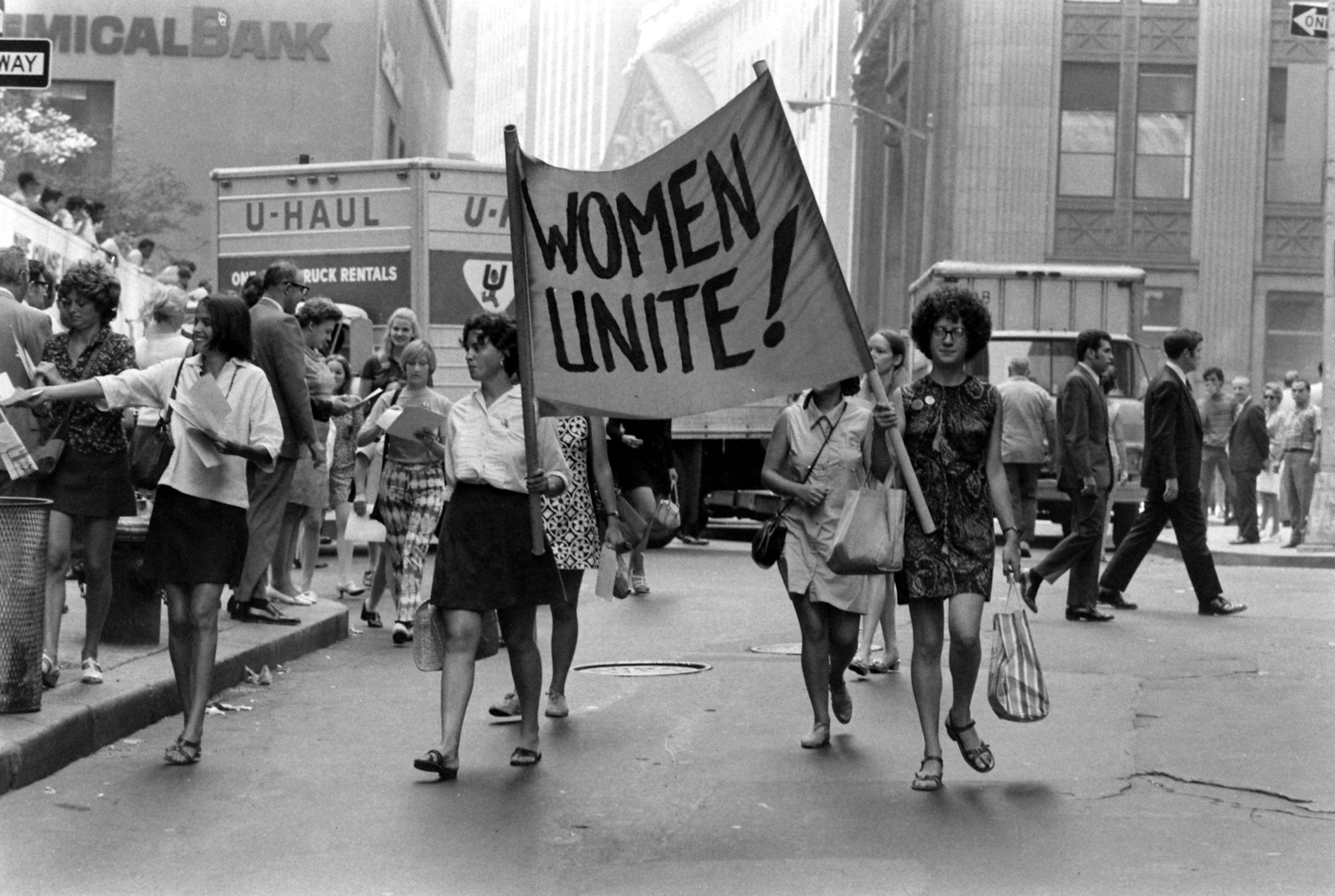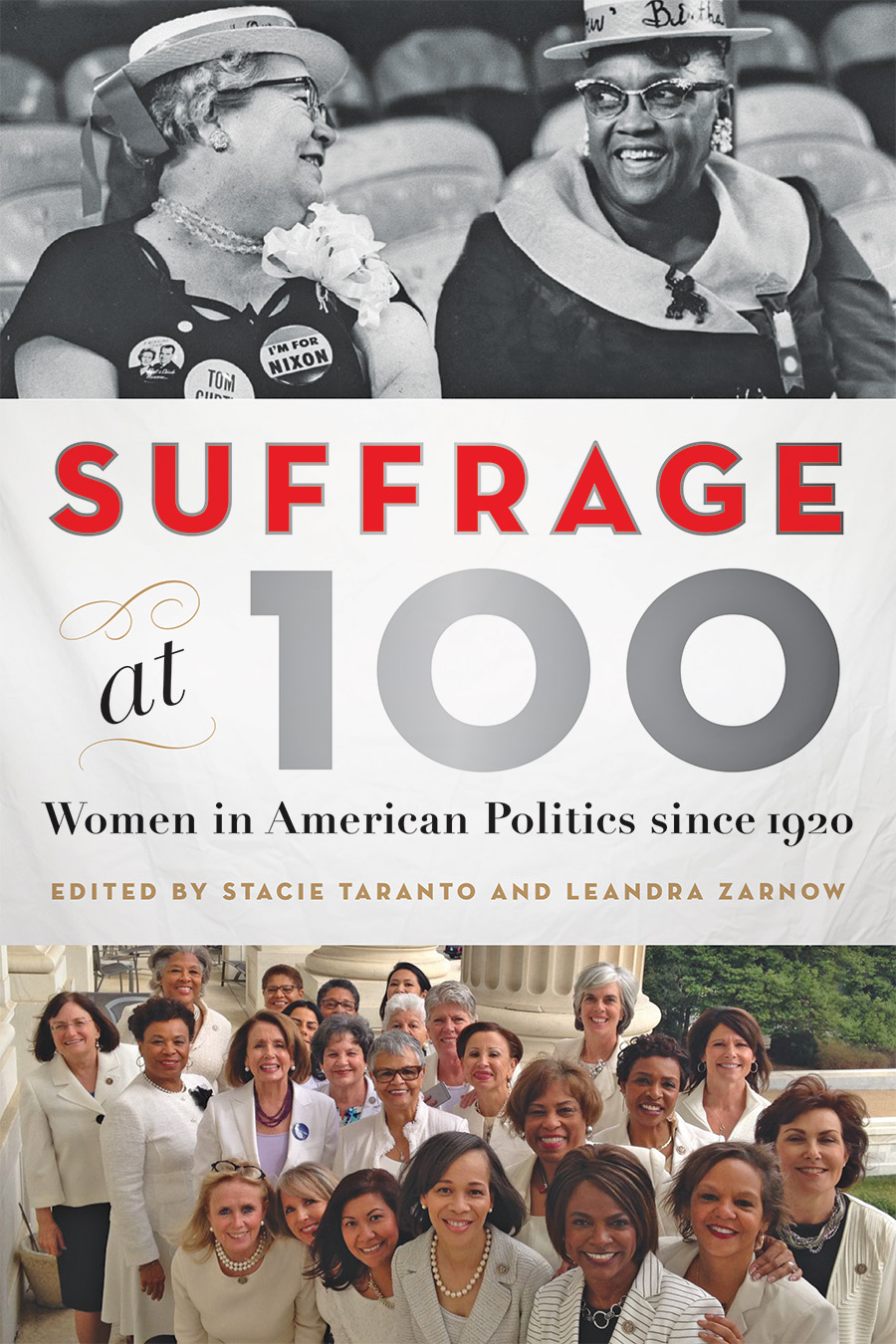
The centennial of the day the 19th Amendment took effect is not the only historic occasion to be marked this August 26, which was designated as Women’s Equality Day by the U.S. Congress in 1973. It was on that day in 1970 that over 100,000 women—and some men—took to the streets across the nation in a Women’s Strike for Equality, using the 50th anniversary of women’s suffrage to bring renewed attention to women’s rights.
This march was the biggest women’s mobilization in U.S. history until the Women’s March in 2017 shattered that record—and, like the more recent example, was both a significant catalyst for change and a spark that awakened opposition. The Women’s Strike for Equality caught Americans off guard in 1970, highlighting discontent about women’s status in America that had been brewing since pioneering Rosie the Riveters were fired from their jobs and told to go home to make way for the boys returning after World War II. The organizers sought to draw a continuous line between their actions and those of earlier women’s suffrage advocates, but they also wanted to make clear that voting rights had not led to gender equality or equal political power. Fifty years after women’s suffrage was inscribed into the U.S. Constitution, the work was unfinished. Today, 50 more years have passed and the same truth remains.
For many Americans, watching local and national coverage of the Women’s Strike for Equality on the evening news was the first time they saw feminism on display. Viewers witnessed a movement that cut across all identity and partisan lines, with women marching in over 90 cities across the country. The largest gathering in New York City stretched across Fifth Avenue, 50,000-people deep. There were radical “Weatherwomen and [more moderate] League of Women Voters members … black women, suburban housewives, professionals, office workers, women of the peace movement, Black Panthers and religious orders,” reported one journalist on the scene in Washington, D.C., where over 1,000 attendees carried a banner asserting, We Demand Equality.
The original idea was a dramatic union-styled work stoppage. “Don’t Iron While the Strike is Hot,” became the strike’s leading slogan. “Don’t Cook Dinner, Starve a Rat Today,” went another. Madison Avenue became “Dolly Madison Avenue” after a determined woman scaled the street sign to make this correction. Femininity was on notice, just as herstory was being written. “Sisterhood Is Powerful” and “Unite Women” were prominently featured slogans that signaled the coalescence of a mass women’s movement weaving together a kaleidoscope of diverse interests. “We’re your sisters, we need your help,” challenged a member of the Radical Lesbians, who spoke at a culminating rally at Bryant Park in New York City. And Frances Beale, leader of the Third World Women’s Alliance, challenged white women from less radical feminist groups like National Organization for Women to be more attuned—in their policy prescriptions and organizing tactics—to the “double jeopardy” women of color experienced because of their gender and race.
From this wide range of feminist groups across the political spectrum, organizers promoted three straightforward policy goals: universal childcare, free abortion on demand and equal opportunity in workplaces.
Get your history fix in one place: sign up for the weekly TIME History newsletter
In some ways, they were successful. Strikers capitalized on media attention to pressure the U.S. Congress and Nixon Administration for change. In the immediate aftermath of the strike, feminists convinced (overwhelmingly male) legislators to pass transformative laws that changed the landscape for women in school, at work and at home—the passage of Title IX of the Higher Educational Amendments Act in 1972 and the Equal Credit Opportunity Act in 1974 are two highlights.
But the Women’s Strike for Equality was also an early crystalizing moment for conservative women and their allies. By the mid-1970s, feminists would be routinely squaring off against opponents over issues such as federally subsidized childcare, the proposed Equal Rights Amendment to the U.S. Constitution, and the merits of legalized abortion at the federal level following the Roe v. Wade Supreme Court decision in 1973. The march in 1970 previewed the opposition that was to come as issues of women, gender and the family—what conservatives would eventually dub the “family values” agenda—moved to the center of national debate.
One enterprising housewife, Helen Andelin of Santa Barbara, Calif., told reporters in 1970 that rather than strike for women’s equality on August 26, she planned to hold Celebration of Womanhood Day instead. A 50-year-old mother of six, she urged like-minded women to wear their “most frilly, feminine dress” and bring their husband a “delicious breakfast with a smile in bed” that day. Only women, she believed, could challenge women’s liberation, which she feared, “was destroying our femininity that men love so much.”
But popularizing the catchphrase “the personal is political” proved easier for feminists than changing the fundamental structural underpinnings of sexism in all areas of business, politics and everyday American life. The bipartisan support for feminism that had made sweeping legislation possible earlier in the 1970s soon faded. In recent years, participants in the #MeToo, #TimesUp and #SayHerName movements have underscored the unfinished business of the women who went on strike in 1970. Today, amid the COVID-19 pandemic, the strikers’ demand for universal childcare is particularly urgent.
At this 50th anniversary of the march—as we also mark the suffrage centennial at a moment of incredible financial hardship and strain on families, especially those headed by single mothers—it is time to shift this course and finally realize the goal of women’s equality.

Stacie Taranto and Leandra Zarnow are the editors of Suffrage at 100: Women in American Politics since 1920, available from Johns Hopkins University Press.
More Must-Reads from TIME
- Cybersecurity Experts Are Sounding the Alarm on DOGE
- Meet the 2025 Women of the Year
- The Harsh Truth About Disability Inclusion
- Why Do More Young Adults Have Cancer?
- Colman Domingo Leads With Radical Love
- How to Get Better at Doing Things Alone
- Michelle Zauner Stares Down the Darkness
Contact us at letters@time.com